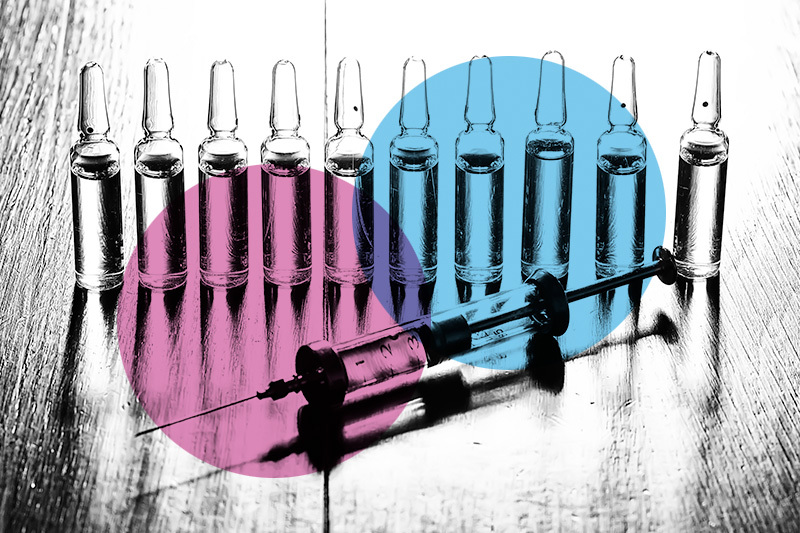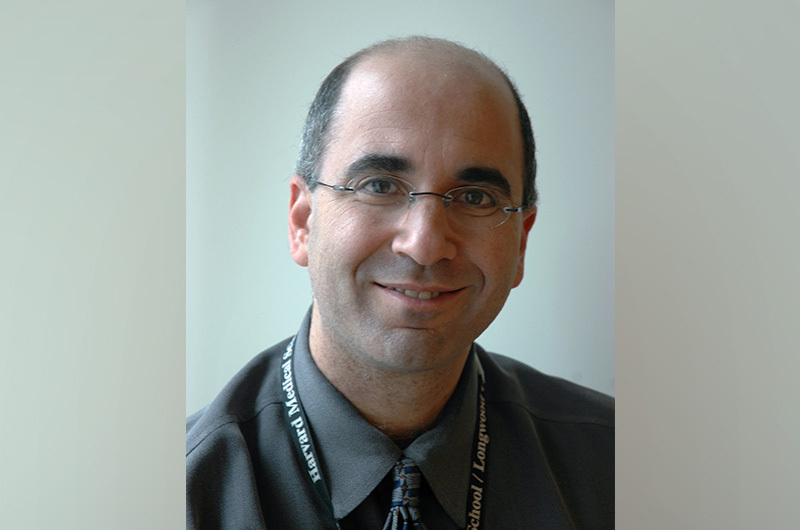Getting to a COVID-19 vaccine as fast and as safely as possible

The novel coronavirus is not expected to disappear anytime soon. With physical distancing, virus testing, contact tracing, and potentially new therapeutics, we may be able to keep it partially at bay. But many eyes are looking toward a COVID-19 vaccine, and scientists are feeling the urgency.
. Work is moving quickly, but to show that a vaccine prevents COVID-19, we have to vaccinate a large, diverse cohort of people while the virus is actively circulating, and monitor them long term.
. The fastest vaccine developed to date has been for mumps, and that took four years.
. With any new disease, especially one that is proving to be as complex as COVID-19, we will have to move carefully to ensure safety.
A timeline frequently cited suggests that a vaccine ready for human use will be available by early 2021. But is such a timeline plausible? And will enough people get vaccinated to protect the population? We spoke to Rick Malley, MD, senior physician in Boston Children’s Hospital’s Division of Infectious Diseases whose research focuses on vaccine development.
Where are we now with a COVID-19 vaccine?
We are fortunate in having a head start for COVID-19. Just a few weeks after the syndrome was publicly identified, the genetic sequence of SARS-CoV-2 was published. Because of research on the related coronavirus causing SARS, we know about its spike protein and the receptor it targets in the human body.
That’s enabled groups to begin designing vaccines and testing them in animals very early in the pandemic. Scientists are using many different approaches, including killed inactivated virus, live attenuated virus, fragments of SARS-CoV-2 proteins (particularly the spike protein), and DNA or RNA for these proteins.
The DNA/RNA vaccine approaches are furthest ahead because they can be produced quickly and face fewer regulatory hurdles before they can be tested in humans. No vaccine based on either of these platforms has yet been licensed for human use, but several are in clinical trials for other diseases.
At least three vaccines are moving rapidly through clinical trials, with some evidence that they stimulate the immune system to fight the virus. One described in The Lancet, from CanSino Biologics in China, uses a genetically engineered adenovirus to deliver the DNA that encodes the SARS-CoV-2 spike protein into human cells. Another, from Moderna (Cambridge, MA), bypasses the DNA step and delivers messenger RNA that cells can directly read to make the spike protein. A third vaccine, developed by Oxford University in collaboration with AstraZeneca, uses a different adenoviral vector, and is currently in phase 2/3 clinical trials.

How realistic is a 12- to 18-month timeframe for a COVID-19 vaccine?
This prediction, made early in the pandemic, raised a lot of eyebrows in the vaccine scientific and development community. We would all like to see a vaccine quickly, but the fastest vaccine developed to date has been for mumps, and that took four years. With any new disease, especially one that is proving to be as complex as COVID-19, we will have to move carefully.
We can expect that by end of this year, or early 2021, one or more vaccines will have data from thousands of healthy volunteers indicating safety, tolerability, and stimulation of an immune response that may be protective. But to be confident that a vaccine is truly safe and protective, that is not enough.
With any new disease, especially one that is proving to be as complex as COVID-19, we will have to move carefully.”
– Rick Malley
To show that the vaccine prevents disease, we have to vaccinate a large cohort of people while the virus is actively circulating, to see how many vaccinated versus unvaccinated people develop COVID-19. As the number of COVID-19 cases drops in the U.S. and Europe, getting enough patients to prove efficacy becomes a major logistical challenge. Moreover, a vaccine can have side effects that only become evident when tested in subjects of all ages, who are monitored over a period of time. Some vaccine candidates have actually made disease worse in people who eventually do become infected. History tells us that vaccines can fail, in either early or late stages of development.
Finally, once we have a COVID-19 vaccine, billions of doses would need to be manufactured to cover much of the world population and provide the “herd immunity” that curbs the spread of the virus. Never has a vaccine been rolled out at such a scale, and massive new factories would likely need to be built.
Recognizing this, some manufacturers are starting to build manufacturing plants ahead of time. Still, until enough doses are available, we may need to roll out the vaccine in stages, starting with people who are most vulnerable or at highest risk for being exposed to COVID-19 — the elderly, some immunocompromised patients, health care professionals, and other essential workers.
Is there reason to take special care with a COVID-19 vaccine?
All vaccines can run into safety issues during testing, but we may need to pay even greater attention to safety in the case of COVID-19. What started as a respiratory illness is now evolving into a much more complicated syndrome with many varied and unpredictable effects. That includes runaway immune reactions in some people that we still don’t understand.
Getting safety issues wrong with a COVID-19 vaccine could set us back for years or even decades.”
– Rick Malley
In particular, we have recently learned that this virus can cause a multi-system inflammatory syndrome in children (MIS-C), which likely starts several weeks after the child has been exposed. To date, we do not understand why some children develop this syndrome while the majority do not, or why this syndrome targets children specifically. We need to learn much more about how people’s immune responses sometimes protect them and other times contribute to more damage, so we can avoid triggering harmful responses with a vaccine.
While there is urgency to find a way out of this pandemic, safety considerations must remain an absolute priority. As with most vaccines, a COVID-19 vaccine would be given to mostly healthy people whose risk of severe complications from the virus is not very high. Therefore, serious side effects from the vaccine itself must be extremely rare to make it acceptable to most.
And general acceptance of a COVID-19 vaccine is not a given: a recent study and polls suggest that a quarter to a half of the U.S. population would not be willing to receive it. Some people may legitimately fear that if a vaccine is developed too quickly, there won’t be time to adequately test it. Getting safety issues wrong with a COVID-19 vaccine could set us back for years or even decades.
Should we be optimistic about the development of a COVID-19 vaccine?
Yes, I think so. On the one hand, a vaccine has never been developed against a coronavirus — including SARS, MERS, or coronaviruses causing the common cold. At the same time, never in the history of medicine has such an intense global effort been focused on the development of a specific vaccine. Vaccine development is often described as an empirical science: different approaches are tried, many fail, but one or two prove to be successful. There are now more than 150 different candidate COVID-19 vaccines in different stages of development, which gives me hope that one or more of these will help us get rid of this virus.
Malley is scientific founder of Affinivax, a vaccine development company, and is on the company’s board of directors.
Learn more about Boston Children’s response to COVID-19 and read more stories on coronavirus research and clinical care at the hospital.
Related Posts :
-

No limitations: How Flora found answers for MOG antibody disease
Flora Ringler’s fifth birthday didn’t turn out as she had hoped. She and her family were vacationing in ...
-

What orthopedic trauma surgeons wish more parents knew about lawnmower injuries
Summer is full of delights: lemonade, ice cream, and fresh-cut grass to name a few. Unfortunately, the warmer months can ...
-

Partnering diet and intestinal microbes to protect against GI disease
Despite being an everyday necessity, nutrition is something of a black box. We know that many plant-based foods are good ...
-

‘They never stopped trying to figure out what was happening’: RyennAnne’s encephalitis journey
When 5-year-old RyennAnne Hurst developed a bad sore throat last summer, her doctor thought she might have strep and prescribed ...





